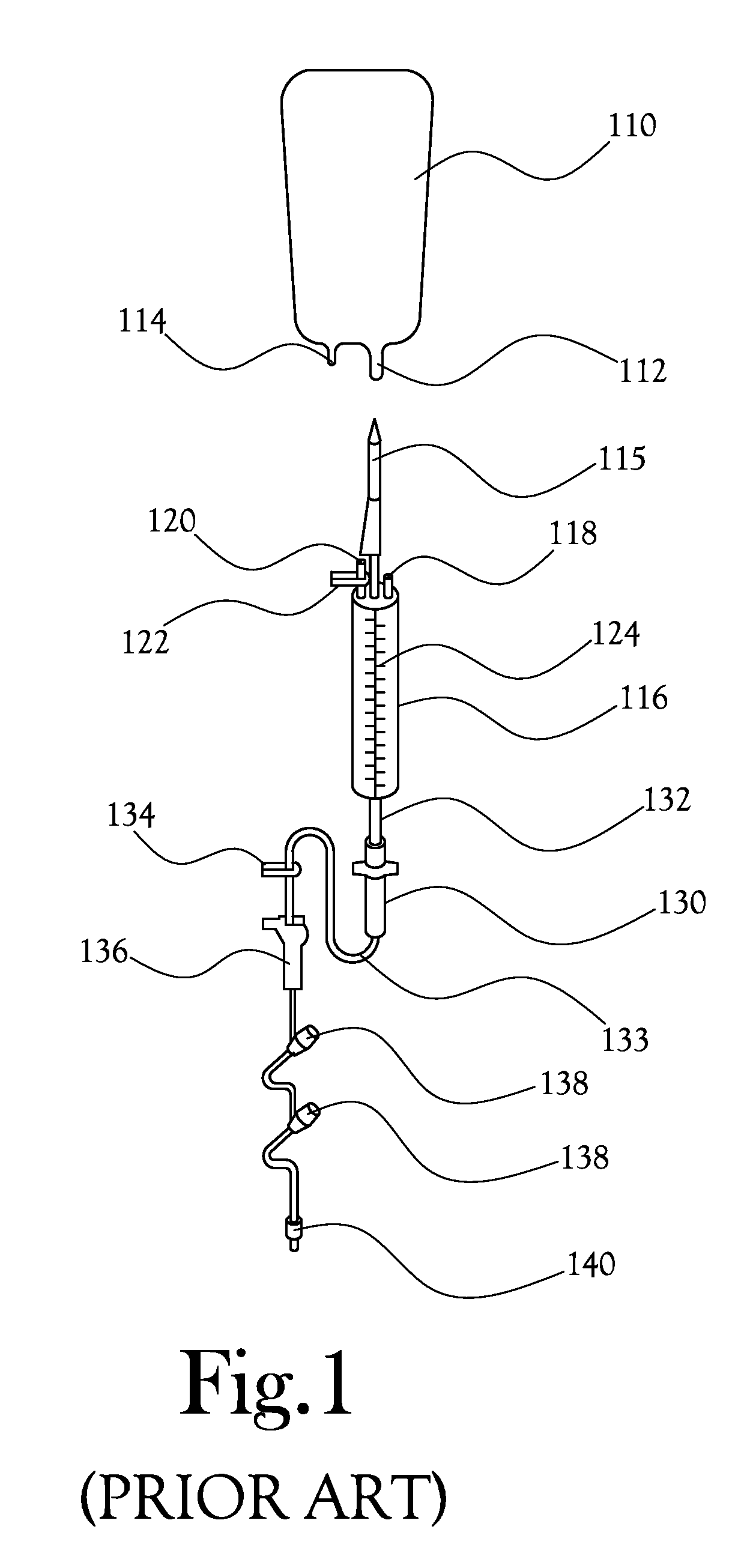Retro-Primed Medication Delivery System
a technology of a delivery system and a pump, which is applied in the direction of medical devices, intravenous devices, medical devices, etc., can solve the problems of pain or other complications, manual push process requires considerable time, and method drawbacks
- Summary
- Abstract
- Description
- Claims
- Application Information
AI Technical Summary
Benefits of technology
Problems solved by technology
Method used
Image
Examples
Embodiment Construction
[0033]Disclosed herein is a system and method for intravenous (IV) delivery of a reconstituted medication with simultaneous, uninterrupted delivery of a primary fluid. The retro-primed medication delivery system includes a primary bag containing a primary fluid, such as a saline solution or a dextrose solution, possibly with additives such as potassium chloride, and a secondary bag (or “medication bag”) adapted to hold a medication. The primary bag and the secondary or medication bag are connected to a fluid transfer system in fluid communication with a delivery device for passing fluid to the patient (such as an IV catheter); the fluid transfer system allows the passage of fluid between the primary bag, the medication bag, and the delivery device. The method involves “retro-priming” the medication bag with primary fluid from the primary bag before, adding a medication if it is not already present, thoroughly mixing the medication with primary fluid in the medication bag, and beginn...
PUM
 Login to View More
Login to View More Abstract
Description
Claims
Application Information
 Login to View More
Login to View More - R&D
- Intellectual Property
- Life Sciences
- Materials
- Tech Scout
- Unparalleled Data Quality
- Higher Quality Content
- 60% Fewer Hallucinations
Browse by: Latest US Patents, China's latest patents, Technical Efficacy Thesaurus, Application Domain, Technology Topic, Popular Technical Reports.
© 2025 PatSnap. All rights reserved.Legal|Privacy policy|Modern Slavery Act Transparency Statement|Sitemap|About US| Contact US: help@patsnap.com



